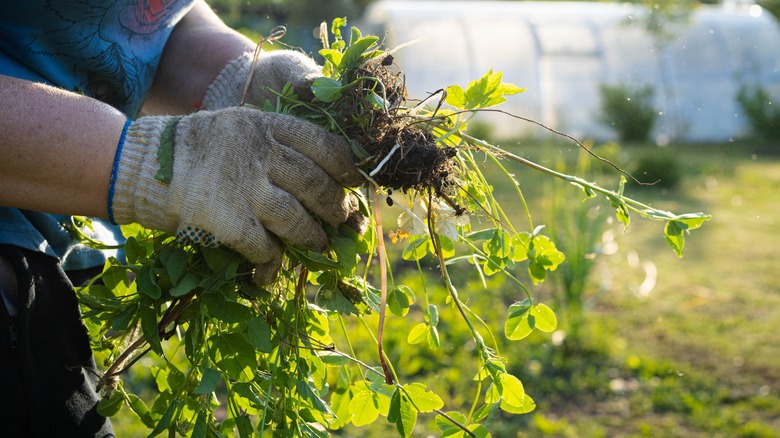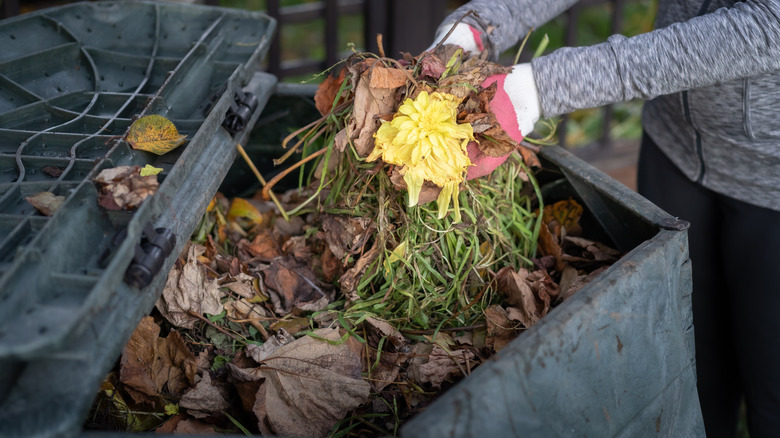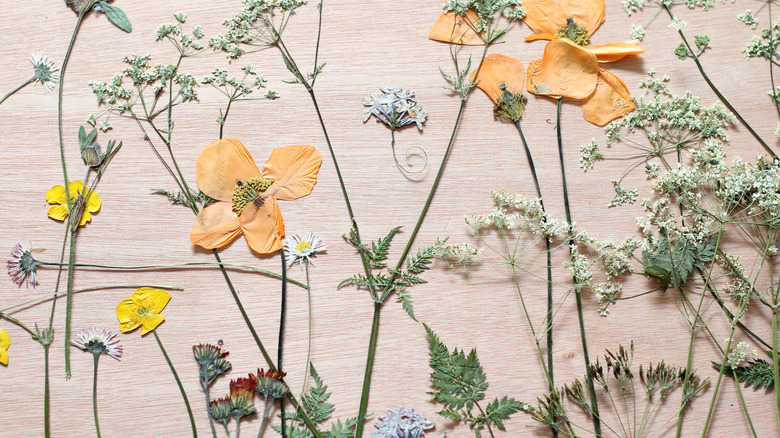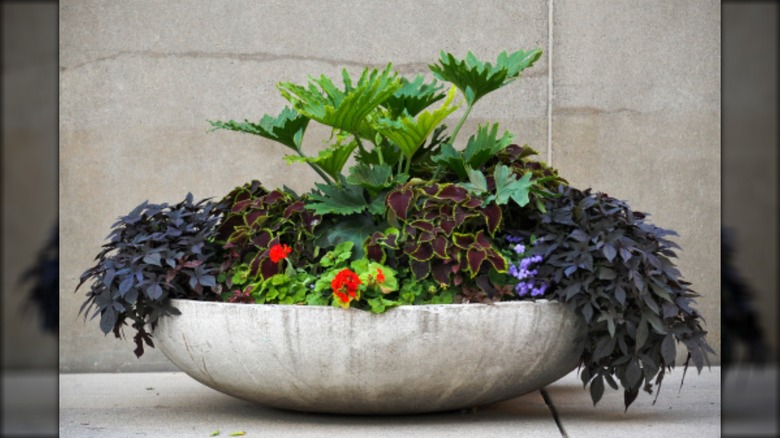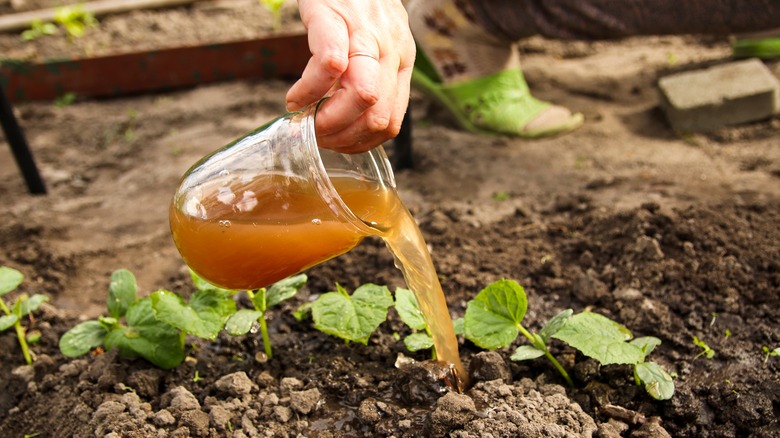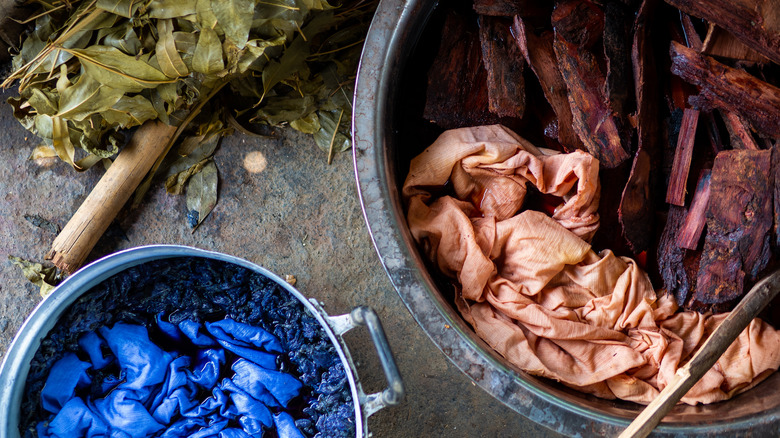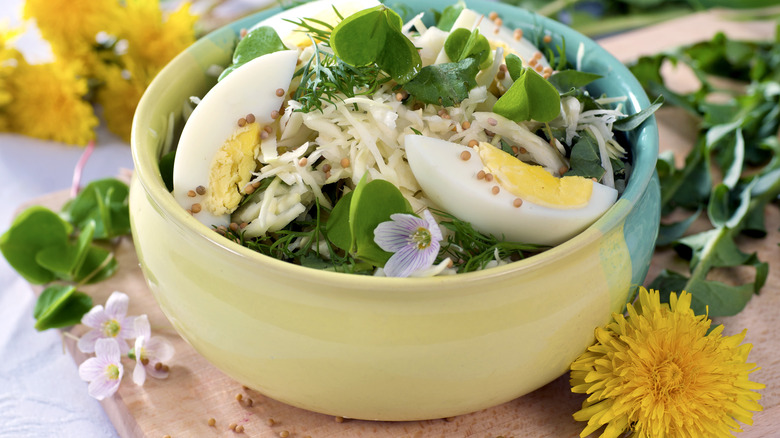7 Unexpected Ways To Repurpose Pesky Weeds Around Your Garden
Typically, after a long day of pulling weeds, you want to be rid of them entirely. They're invasive little pests that will rob your garden plants of precious nutrients and fight for space in the soil. Many people choose to burn weeds or simply throw them in the garbage. In fact, it's estimated that plant trimmings contribute to upwards of 12% of the solid waste sent to American landfills. However, rather than contribute to more waste, you could consider giving your weeds a renewed purpose. We've put together seven unexpected ways to repurpose those pesky weeds around your garden, from using it as compost and fertilizer to making dye and watercolors.
Many of these solutions are simple and require very little; most of which you're likely to have already. Most of them can be completed by children, though adult supervision may be required for some projects that involve boiling water. These plant-based DIYs are eco-friendly and range from artistic to delicious. So the next time it is weed-pulling day, consider saving your invasive bounty and putting those plants to use.
Compost
Weeds are plant matter just like the food scraps you put into your compost. When they break down, they enrich soil with nutrients. The enriched soil is perfect for using in the garden and supplies plants with a host of beneficial vitamins. You will need a bin with a lid, soil, and organic matter like weeds or leaves to get started. If you don't have a garden, you may be able to have your compost collected by a local compost program. Visit your city's sanitation website for more details. Do not compost perennial weed species or seedlings.
Pressed floral art
Not all weeds are ugly. You can and should incorporate weeds like dandelions into pressed floral art. Daisies, creeping buttercups, and chicory are all colorful flowering species. Other weeds add texture that will juxtapose any delicate flower petals. It's easy to press flowers and turn them into artwork or home decor. The simplest process involves drying the plants and sandwiching them between two pieces of wax paper inside a heavy book. Glue dried flowers to a backing or place them between glass to admire the plant from all angles.
Container filler
Do you need some pops of green in a floral display, but don't want more plants competing for root space and nutrients? Throw some fresh weeds atop the soil and blend them into your container garden. Do not place them into the soil or they'll become a nuisance. Instead, use them as you would mulch in a garden bed and place them down loosely. You may want to strip them and break them apart first to curate the best look for your display. Switch out the plant parts as they lose color.
Fertilizer
Did you know that you can make your own fertilizer with weeds? By making your own tea from weeds, you'll be transforming the invasive plants from pesky invaders to powerhouse helpers. Homemade weed-based fertilizer is easy to make and cost effective. You'll only need a bucket of crushed weeds and water. Mix 8 cups of water for every pound of weeds and let it sit in a closed bucket for about four weeks. Strain the mixture and apply it to your plants with a squirt bottle or pour directly onto the soil around the plant.
Dye
Weeds, like all plants, make beautiful natural dyes. You can create your own plant-base dye with very little. First, gather the weeds you want to use and chop them up or break them apart. Add them to a large stock pot and add enough water to cover the weeds. Allow the plants and water to simmer together until the plant looks much duller in color. Strain the plant matter out and you're left with all-natural dye. Dying the fabric will depend on the material, but typically, you will submerge the fabric in the dye and allow the color to soak into it.
Ingredients
There are many edible weeds. While some are used as garnish, there are many others that have culinary and medicinal properties. Chicory root, for example, is often used as a substitute for coffee. Cooking with weeds is a delicious way to get them out of your garden. Popular edible weeds include dandelions, shepherd's purse, and pennycross. Be sure to identify the weeds in your garden and consult a local field guide or accredited website before determining if a plant is safe to consume. Additionally, always wear gloves when handling weeds and other plants you've yet to identify.
Watercolors
The plant-based dye DIY we mentioned earlier uses the pigments in the weeds and their flowers to color fabric. That same pigment can be used to make all-natural watercolor paints, too. You'll first dry the parts of the weed with the pigment you like. Then, you'll crush the dried weed into a fine power; a mortar and pestle works best if you have one. Next, you'll combine the ground pigment with watercolor binder and muddle the two together. Once the paint is blended, put it in a container and allow it to dry.
